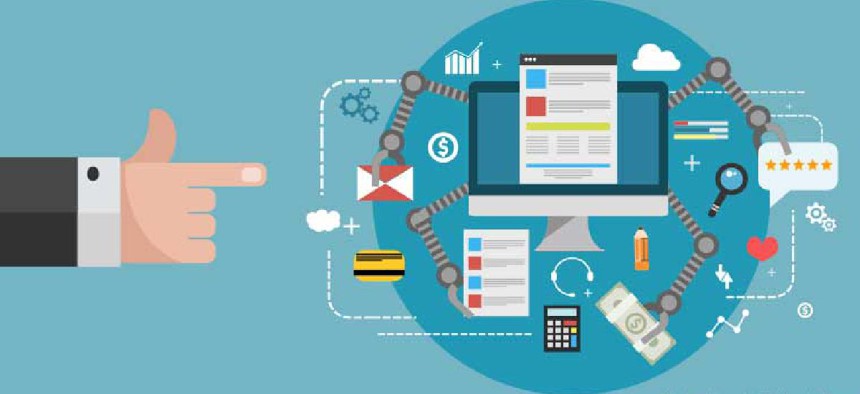Remote staff build Salesforce tool to speed benefits to veterans

The Post Payments Workshop tool lets Veterans Benefits Administration employees see the status of a claim at any point in its life cycle.
A group of Veterans Benefits Administration (VBA) employees worked together remotely to build a Salesforce-based app that speeds delivery of veterans’ benefits.
The new system, the Post Payments Workshop, is a module that lets VBA Finance Center employees see the status of a claim at any point in its life cycle -- something they could not do in the past. Previously, staff at the VBA’s National Call Center or a regional office would upload a veteran’s claim of nonreceipt of benefits to the Veterans Benefits Management System (VBMS) VBA Finance Center (VBAFC) work queue. Center employees would manually track all of the requests to trace missing benefits – what the VA calls a tracer action-- and each claim would be assigned to an employee to complete.
Now, with Post Payments Workshop, when veterans report not receiving their benefit payment, the inquiry is entered into VBMS and stored in the VBA corporate database. The data is transferred to the VA’s Salesforce platform, and the claim is assigned to the finance center to research.
When tracing the missing benefit, VBAFC staff sometimes need information from the Treasury Department or they may request a one-time hardship payment for the veteran. All these actions are now tracked in the Post Payments Workshop, a VA spokesperson said in written responses to questions from GCN. “Once a resolution is found, VBAFC will take any necessary actions, provide notes and close the claim in Salesforce. Lastly, that information is transferred back to VBMS to close the loop.”
Right now, some of the claim item transfers from VBMS to the Post Payments Workshop happen manually, but asynchronous application programming interface calls are being tested, the spokesperson said. When those are deployed in the next couple months, they will further reduce the time between steps and save labor.
Built on the VA’s Salesforce platform, Post Payments Workshop uses a three-tiered architecture: a client engagement layer on the Salesforce user interface, with workflow data stored on its Government Cloud; an API layer using MuleSoft; and the VBA corporate database, where source claim data is stored.
Using existing resources and Salesforce-certified administrators and developers, VBA built Post Payments Workshop in eight months. It went live for VBAFC customer support staff on Feb. 16.
“There were no further licensing costs to use the Salesforce platform because the end users already have a license for other applications,” the spokesperson said.
The employees who built the app come from Financial Management Business Solutions, the VBA Finance Center and directorates in the Office of Financial Management in Washington, D.C., and Chicago. They used Salesforce to collaborate on the new system.
“Agile software development was used in its truest form -- the system users and the team building the application worked together daily to provide short bursts of requirements; iterate/develop new versions; test those versions,” the spokesperson said. They then “repeated the process until a production-ready version was approved.”
The biggest benefit the new system has brought is faster claim resolutions. The average number of days to resolve inquiries fell to 21 from 23 since implementation, according to the spokesperson, who added that, overall, centralizing the process has streamlined efforts for processing fiscal transactions, modernizing customer contact efforts and improving veterans’ experience.
Post Payments Workshop could be replicated for other similar business processes and workflows, the VA official said. “Traditionally, these applications can be costly to develop and deploy, but Salesforce and other similar platforms are making some development easier through declarative or configurable functions,” the spokesperson said. “The advantage to building several applications on the same platform is the enterprise can spread the available licenses over several applications which results in a cost savings.”
The employees who built Post Payments Workshop are now looking at creating a robotic process automation solution to assist with other repetitive tasks that National Call Center employees handle. “Currently, end users must copy information from a VA form to process a tracer transaction -- this is currently targeted as a good area to use RPA,” the spokesperson said.
Additionally, future integrations are planned with the VA’s Enterprise Management Payments Workflow and Reporting, a new financial system that will be used to process tracers, hardship payments and other transactions that are often part of the post-payment workflow.





